Efficient and organized storage is the backbone of a successful business, and implementing industrial shelving strategies can streamline operations, enhance productivity, and contribute to overall business success. Effortless organization begins with a thoughtful assessment of the available space, inventory requirements, and workflow dynamics. One key strategy for optimizing industrial shelving is to categorize and prioritize items based on their frequency of use. Frequently accessed items should be placed within easy reach, minimizing the time and effort required to retrieve them. This not only improves operational efficiency but also reduces the risk of workplace injuries associated with repetitive bending or reaching. Utilizing adjustable shelving units allows for adaptability to changing inventory needs, ensuring a dynamic and responsive storage solution.
Moreover, investing in durable and high-capacity shelving units is crucial for sustaining the weight and volume of industrial-grade materials. Heavy-duty shelving systems provide a stable and secure storage environment, preventing damage to goods and ensuring employee safety. Modular shelving solutions can be expanded or reconfigured as the business evolves, offering scalability that aligns with growth and changing storage requirements. Labeling and signage are essential components of an organized industrial shelving system. Clear and legible labels enable quick identification of products, reducing the time spent searching for specific items. Implementing a standardized labeling system enhances inventory accuracy and minimizes the risk of errors in order fulfillment. Additionally, incorporating color-coded labels can further streamline the retrieval process, facilitating a more intuitive and efficient workflow. Effective space utilization is another critical aspect of industrial shelving strategies. Implementing vertical storage solutions maximizes floor space, allowing for the efficient use of available square footage.
This can be achieved through the use of mezzanine platforms, multi-level industrial shelving in austin, or high-density storage systems. By optimizing vertical space, businesses can accommodate growing inventories without the need for extensive facility expansions. Incorporating technology into industrial shelving can elevate organizational efficiency. Automated storage and retrieval systems, RFID tracking, and barcode scanners enhance inventory visibility and control. These technologies not only reduce the likelihood of errors but also contribute to real-time data accuracy, enabling businesses to make informed decisions about stock levels and order fulfillment. In conclusion, effortless organization through industrial shelving strategies is a cornerstone of business success. By prioritizing accessibility, durability, labeling, space utilization, and technology integration, businesses can create a storage infrastructure that promotes efficiency, productivity, and adaptability. A well-organized industrial shelving system not only enhances the overall workflow but also sets the stage for sustained growth and success in a competitive marketplace.


